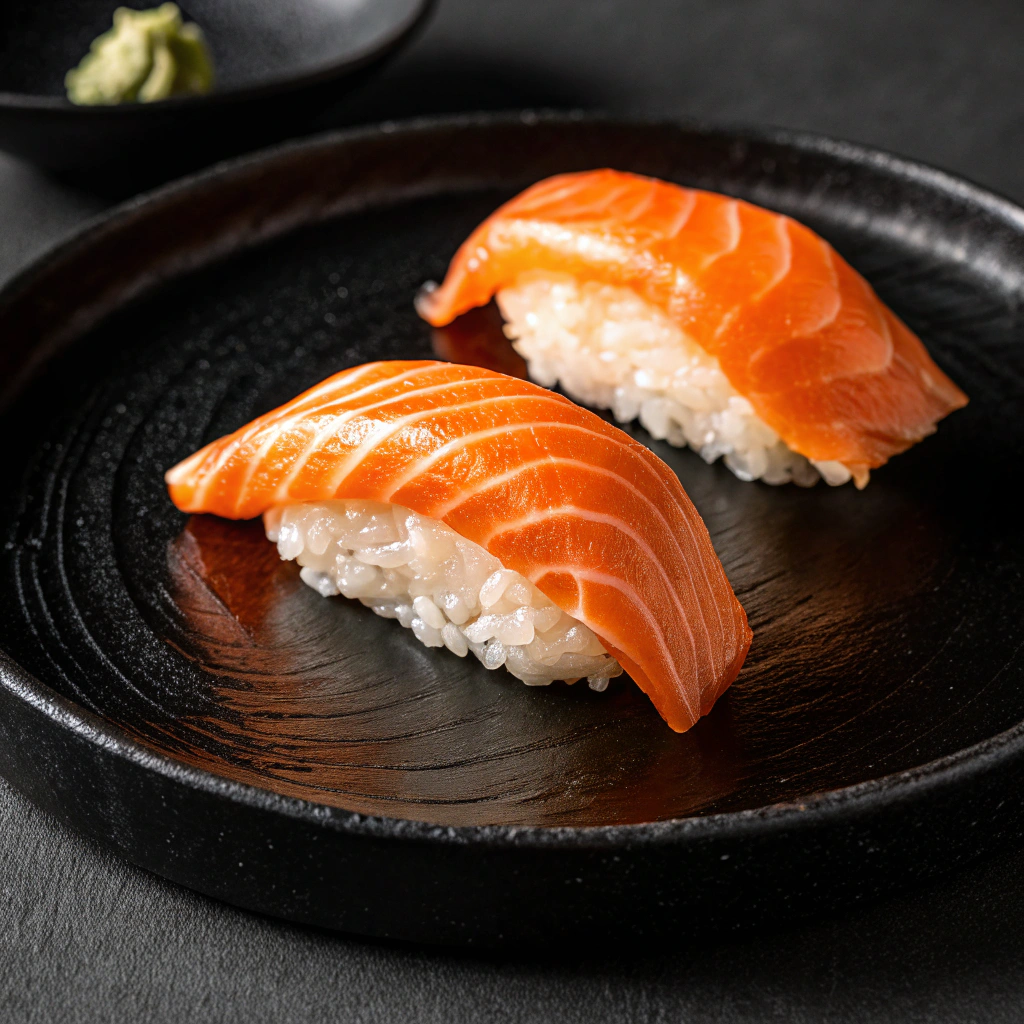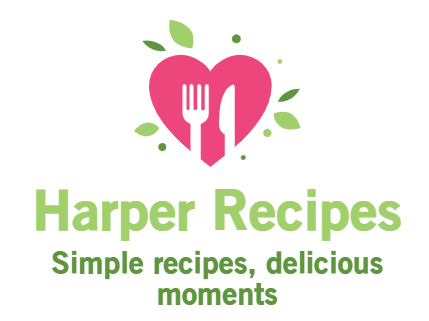
Making sushi at home might seem like something only professionals can handle, but salmon nigiri proves otherwise. This elegant yet simple sushi dish brings out the rich, buttery flavor of fresh salmon, laid over lightly vinegared rice. Whether you’re a seasoned home cook or trying sushi prep for the first time, salmon nigiri is one of the most approachable and rewarding Japanese dishes to master.
In this comprehensive guide, we’ll explore what makes salmon nigiri special, the types of salmon used, how to prepare it safely, and creative topping ideas to elevate it. You’ll also get detailed instructions on how to shape the perfect nigiri, nutritional insights, pairing suggestions, and answers to the most asked questions. Don’t miss our Ultimate Lemon Crinkle Cookies for a sweet treat after your sushi feast.
What Is Salmon Nigiri?
Origins and Cultural Significance of Salmon Nigiri
Salmon nigiri is a type of sushi that consists of a hand-pressed oval of seasoned rice topped with a slice of raw salmon. “Nigiri” comes from the Japanese word nigiru, meaning “to grasp,” which reflects the traditional method of shaping the rice by hand.
While sushi has existed for centuries in Japan, salmon wasn’t commonly used in nigiri until the late 20th century. It gained popularity thanks to Norway’s efforts to promote Atlantic salmon in Japan during the 1980s. Today, salmon nigiri is one of the most popular sushi items worldwide. It’s prized for its vibrant color, tender texture, and delicate, buttery flavor.
Difference Between Nigiri, Sashimi, and Sushi Rolls
| Type | Description |
|---|---|
| Nigiri | Hand-pressed sushi rice topped with raw fish or other toppings |
| Sashimi | Raw fish or seafood slices, served without rice |
| Sushi Roll (Maki) | Seaweed-wrapped rice roll with fillings like fish, vegetables, and sauces |
Looking for inspiration? Try our Blueberry Cottage Cheese Breakfast Bake to start your next culinary adventure.
Key Ingredients for Perfect Salmon Nigiri
Types of Salmon Best Suited for Nigiri
The secret to amazing salmon nigiri is starting with the right fish. Use only sushi-grade salmon. Wild-caught sockeye offers rich color and flavor. Atlantic salmon is more buttery, while King salmon is premium but rare.
Rice Vinegar, Wasabi, Nori, and Garnishes
- Short-grain sushi rice (Japanese style)
- Seasoned with rice vinegar, sugar, and salt
- Optional: wasabi between fish and rice
- Optional: Nori strips, scallions, sesame, microgreens
How to Make Salmon Nigiri at Home
Step-by-Step Recipe for Beginners
- Cook sushi rice, season it with rice vinegar mix.
- Slice sushi-grade salmon thinly (1/4 inch thick, 2.5-inch long).
- Wet hands with vinegar water and shape rice into small ovals.
- Add a dab of wasabi on the salmon slice (optional).
- Place fish over rice and press gently.
Tools and Techniques for Shaping Perfect Nigiri
Use vinegar water to prevent sticking. Don’t over-pack rice. The fish should slightly overlap the rice.
Discover great ideas like this Fall Pumpkin Banana Loaf to round out your meal.
Choosing the Right Salmon for Nigiri
Wild vs. Farmed Salmon: What’s Better?
| Type | Pros | Cons |
|---|---|---|
| Wild | Natural diet, rich flavor | Less fatty, more expensive |
| Farmed | Buttery, available | May have more contaminants |
Sushi-Grade Salmon: What It Means and Where to Buy
Sushi-grade salmon is flash frozen to -4°F for 7+ days or -31°F for 15 hours. Buy it from Asian markets or online sushi suppliers.
Safe Practices When Eating Raw Salmon Nigiri
Food Safety Tips and Freezing Guidelines
- Only use sushi-grade salmon
- Thaw in the fridge
- Use clean knives, separate cutting boards
How to Identify Fresh vs. Unsafe Raw Salmon
Fresh salmon smells clean (not fishy), is firm, bright orange or red, and not slimy or dull.
Best Toppings and Add-ons for Salmon Nigiri
Common Garnishes: Scallions, Sesame Seeds, Yuzu
- Chopped scallions
- Toasted sesame seeds
- Yuzu zest or yuzu kosho
Creative Topping Ideas: Miso Glaze, Truffle Oil
Try a miso glaze (lightly torched), black garlic, edible flowers, or microgreens for visual flair and flavor.
Is Salmon Nigiri Easy to Prepare?
Time, Skills, and Common Mistakes
Yes! But avoid overpacking rice, slicing unevenly, or using long-grain rice.
Kitchen-Friendly Tips to Make Prep Easier
- Prepare rice and fish ahead of time
- Use gloves and vinegar water to prevent sticking
Serving and Pairing Salmon Nigiri
How to Present Nigiri Beautifully
Serve on dark ceramic plates with pickled ginger, wasabi, and shiso leaf.
Best Drink Pairings: Sake, Green Tea, or Wine
| Drink | Why It Works |
|---|---|
| Sake | Traditional, enhances umami |
| Green Tea | Clears the palate |
| Dry White Wine | Pairs with salmon’s richness |
Nutrition Facts and Health Benefits of Salmon Nigiri
Caloric Breakdown and Protein Content
- Calories: ~70 per piece
- Protein: 5–7g
- Fat: 2.5–3g
- Carbs: 7–8g
Omega-3s and Healthy Fat Advantages
Rich in omega-3s, low sugar, good protein source. Excellent for heart and brain health.
FAQs About Salmon Nigiri
What to put on a salmon nigiri?
Wasabi, scallions, sesame seeds, microgreens, miso glaze, yuzu zest, or truffle oil.
What type of salmon is used for the nigiri?
Sushi-grade Atlantic or sockeye salmon. Always labeled sashimi-grade.
Is nigiri easy to prepare?
Yes! It’s beginner-friendly with practice. Just follow rice and knife tips.
Can we eat raw salmon nigiri?
Yes, but only with sushi-grade salmon that’s been properly frozen for safety.
Conclusion
Salmon nigiri is more than sushi—it’s a bite-sized work of art. Now that you know how to choose, prepare, and serve it, you’re ready to impress your taste buds and guests. Check out our Blueberry Cottage Cheese Bake for a sweet follow-up to your sushi night!
